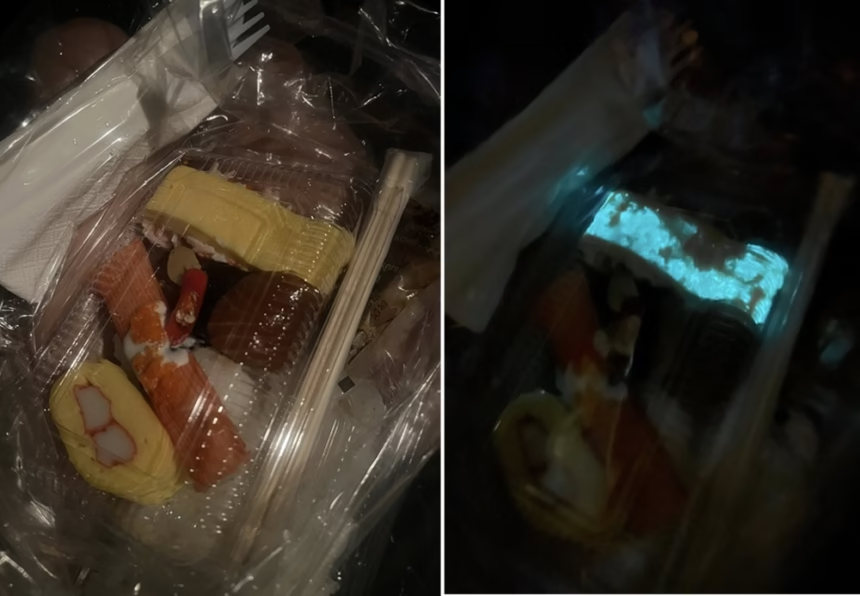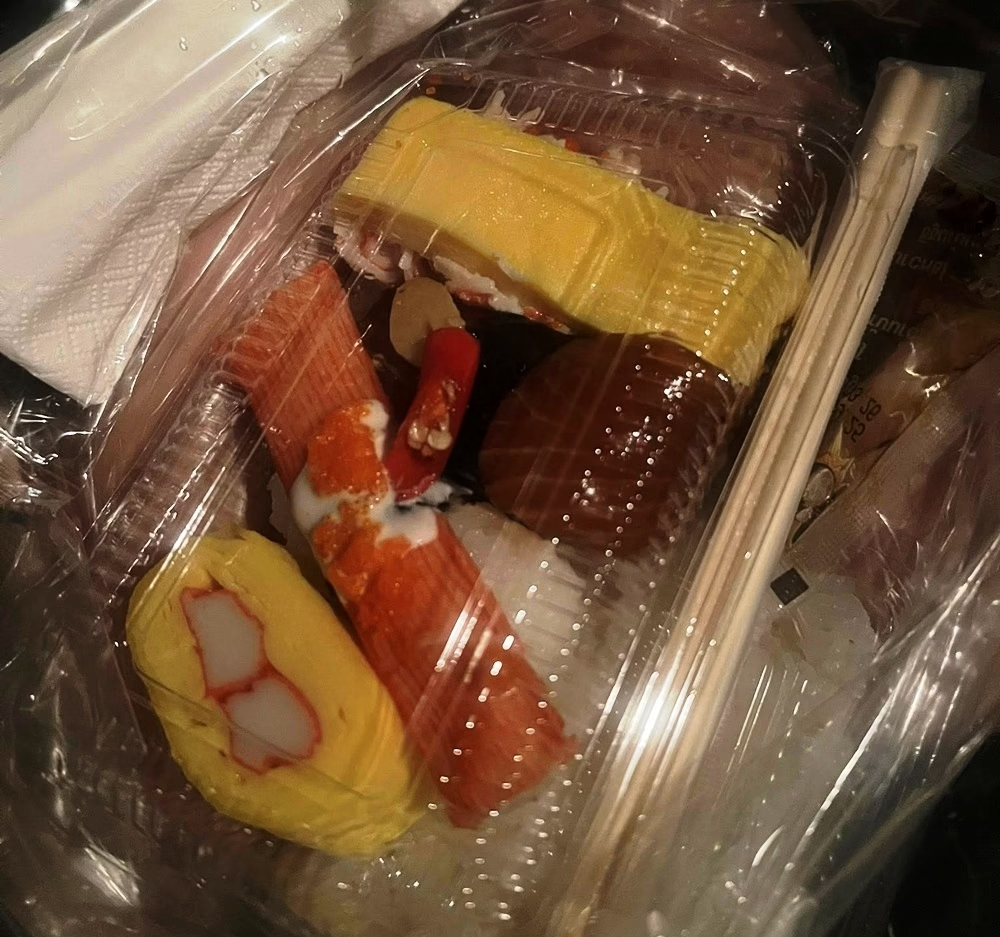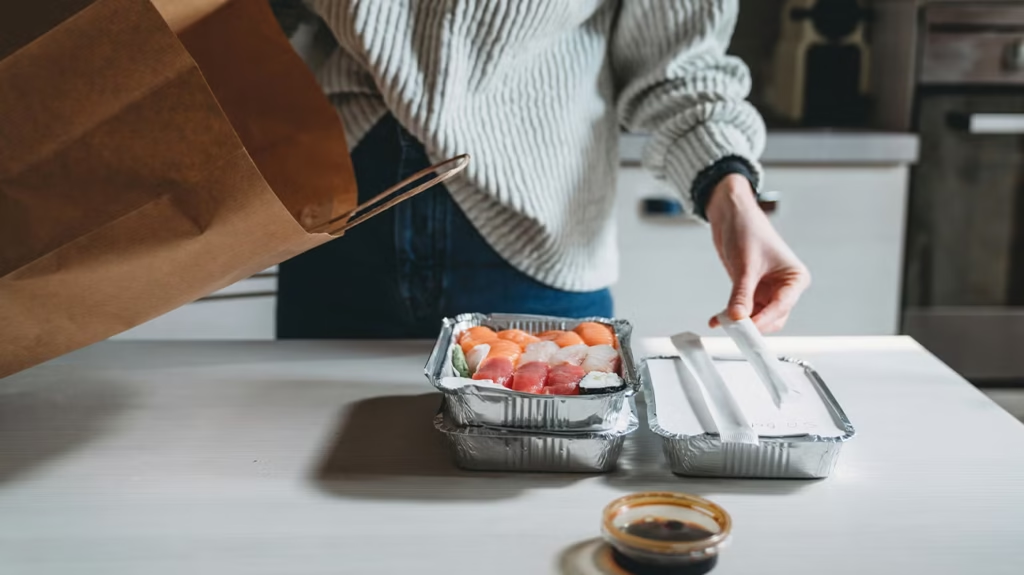BANGKOK – A Facebook post has sparked concern after a customer shared photos of sushi from a well-known restaurant glowing bright blue in the dark. The eerie light left the buyer too scared to eat it, and prompted experts to explain that glowing food can be real, and it can be risky.
The user, posting as Mind Burusskorn on Sunday, uploaded images of the odd-looking sushi with a caption about what happened. They wrote that they bought sushi from a popular brand and, after parking and turning off the lights, noticed a blue glow coming from a single piece.
It was the only one that shone, and it happened to be the piece made fresh at their request because the tray had run out. Shocked by the sight, they decided not to eat it and said they had never seen anything like it.
Food scientists later weighed in. They confirmed that some foods can glow through natural chemical reactions, but the effect often points to bacterial contamination.
Certain bacteria, including Photobacterium and Vibrio, can produce light through bioluminescence when fish or seafood starts to spoil. Poor temperature control or bad storage can trigger this reaction. The blue glow, which appears in darkness, signals high microbial activity. Experts advise people not to eat any food that looks fluorescent, as it may carry health risks.
They also recommend keeping seafood and other perishable items cold, storing them in airtight containers, and handling them properly to reduce bacterial growth and avoid incidents like this.
Keep Sushi Safe with these Simple, Food Safety-Backed Steps:
- Choose fresh ingredients
- Buy fish from trusted suppliers. Look for firm flesh, bright colour, and no strong fishy odour.
- Keep seafood at or below 40°F (4°C) during transport and storage.
- Keep food at the right temperature.
- Chill raw fish and finished sushi at 32 to 40°F (0 to 4°C). Use a thermometer to check the fridge.
- Store sushi in sealed containers to avoid drying out and contamination.
- Eat raw sushi within 24 hours. Cooked sushi can be kept for up to 2 days if chilled promptly.
- Practise good hygiene
- Wash your hands with soap for at least 20 seconds before handling food.
- Sanitize knives, boards, and worktops to prevent cross-contamination. Use one board for raw fish and another for other items.
- Wear gloves when handling ready-to-eat sushi to limit bacterial transfer.
- Stop cross-contamination
- Keep raw fish separate from vegetables and cooked items while preparing.
- Use clean tools for each ingredient and swap them out when needed.
- Handle rice safely
- Cool the rice to room temperature within 2 hours of cooking to limit bacteria such as Bacillus cereus.
- Mix vinegar into the rice; the acidity helps slow bacterial growth.
- Time control for leftovers
- Follow the 2-hour rule. Do not leave it at room temperature for more than 2 hours, or 1 hour if above 90°F (32°C).
- Throw away sushi left out past these time limits.
- Freeze to manage parasite risks.
- Freeze fish at -4°F (-20°C) for at least 7 days, or at -31°F (-35°C) for 15 hours, in line with FDA guidance, unless the fish has been certified as previously frozen.
- Freezing targets parasites, not bacteria.
- Check the quality when buying takeaway.
- Keep takeaway sushi stored in a cold place on the way home; use a cooler bag if needed.
- Look for signs of freshness. Avoid sushi with an off smell, slimy texture, or discoloured fish.
These habits lower the risk of foodborne illness, such as Salmonella, Vibrio, or Listeria, and help keep your sushi safe and enjoyable.
Related News:
Thai Frozen Food 2025: Top Bowls, Air Fryer Snacks, Nutrition Tips, Where to Buy
Skinny Fat Transformation Real Meal Plans (Non-Bodybuilder Version)
















